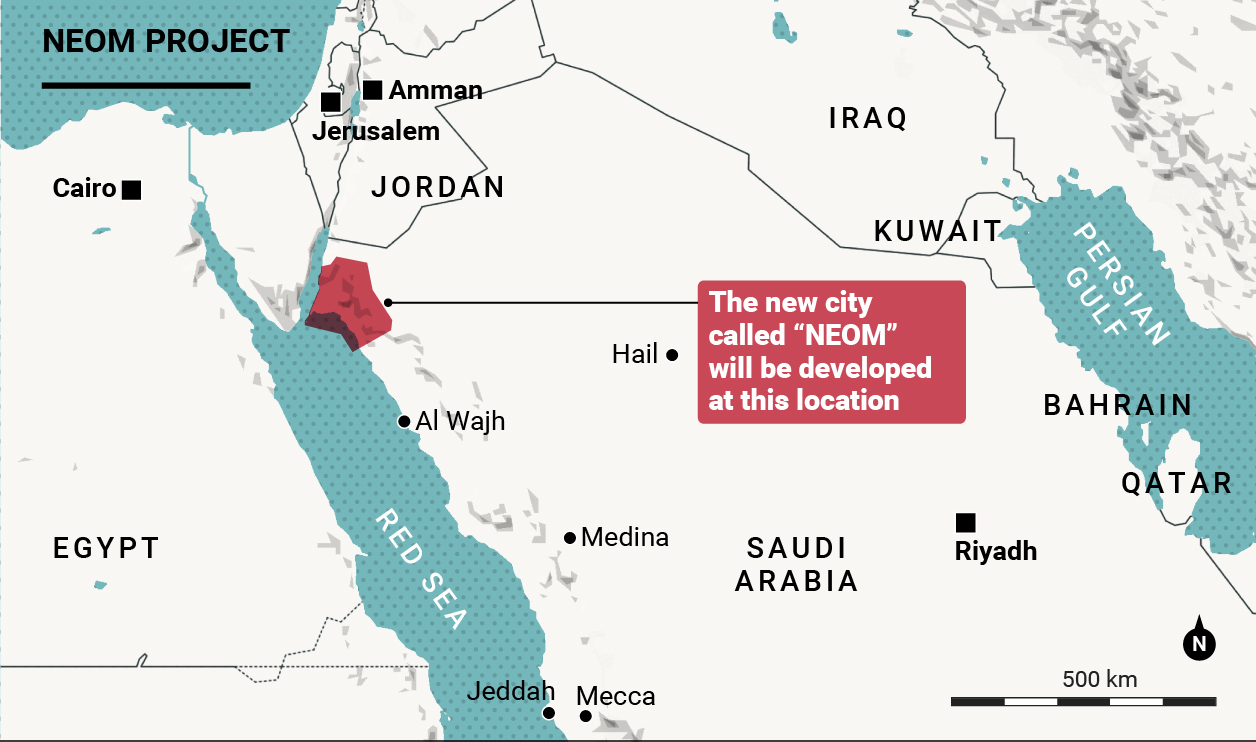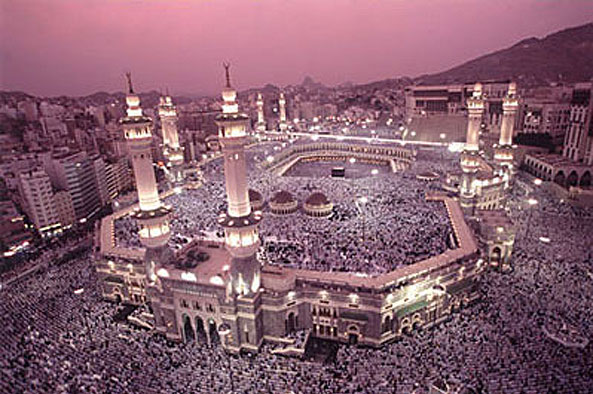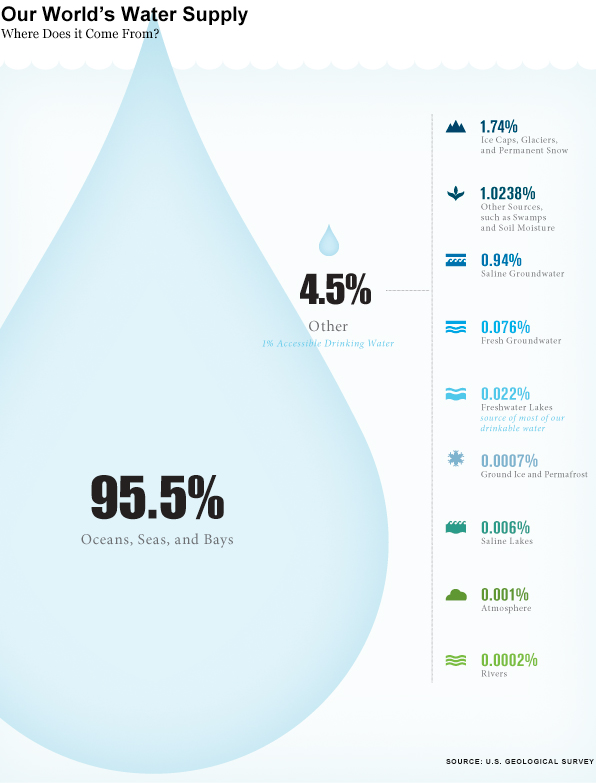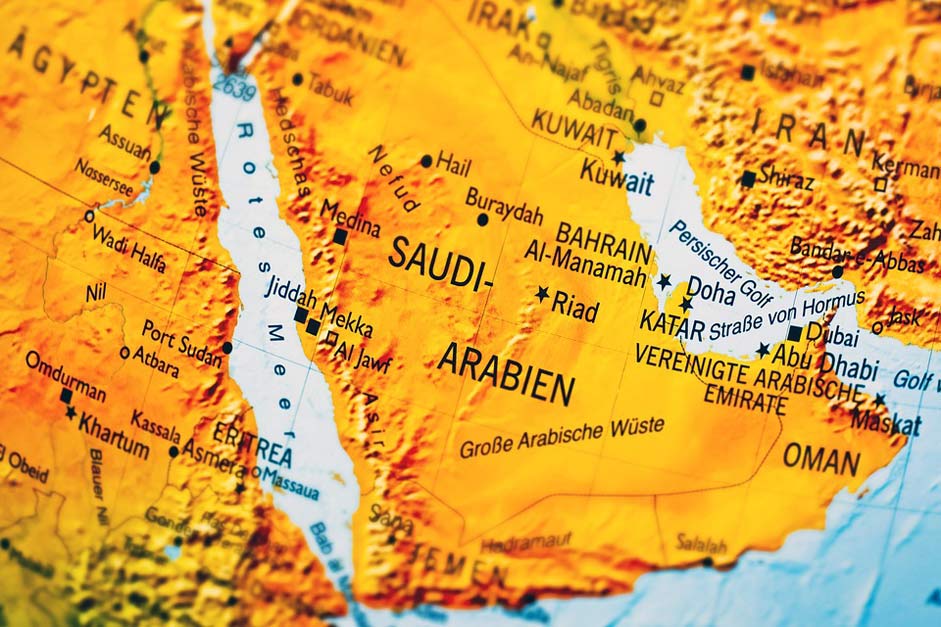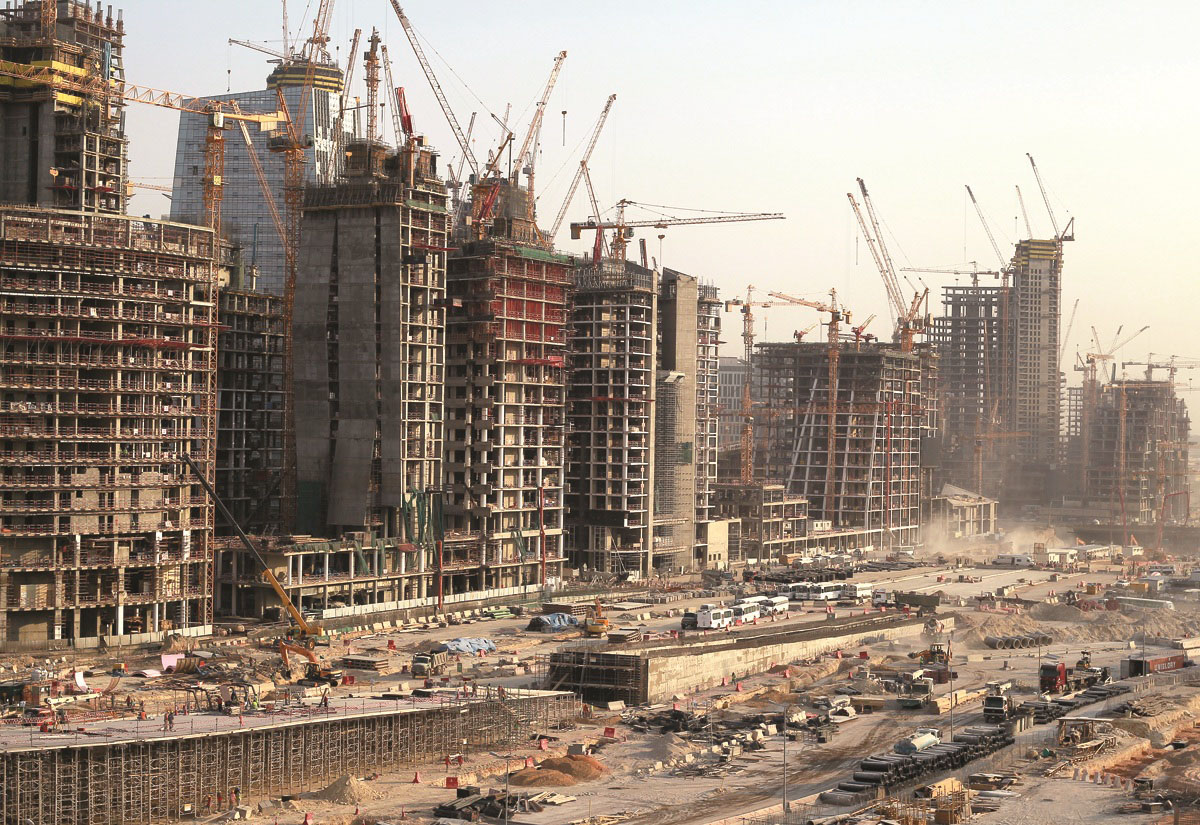Therefore, this study used known community profile indicators to assess the geographic accessibility of existing dental services in the city of Al Madina, Saudi Arabia. Geographic coordinates were identified for 33 primary clinics and 48 private clinics. The Al Madina metropolitan area, containing 1,105,465 residents, was divided into 103 districts, in accordance with the 2010 population census. Clinic locations and the number of dentists at each clinic were integrated with the city's population census data within each district, using a geographic information system. The city metropolitan area consisted of 103 neighborhoods with a total of 1,105,465 residents (715,980 Saudis and 389,485 non-Saudis).
Thirty-three fixed public primary dental clinics and 48 private dental clinics were geocoded within the municipality. The city exhibited an overall practice-to-population ratio of one dental clinic per 13,647 residents. More clinics (55% public and 58% private) were located within 3 km of the city center. Notably, 8% of the population was located more than 10 km from the city center. A total of 37% of the city's districts were identified as areas of relative need; these were primarily located in peripheral metropolitan areas. This study depicts a clear example of the inverse care law, where people living in outer metropolitan areas have less spatial access to dental care than those living in inner metropolitan areas.
The continuing presence of the wildtype haplotype and minor difference in genotypes between mosquitoes in Al Safa and Al Rawabi suggest that selection for pyrethroid resistance may be patchy between districts in Jeddah. Changes in genotype frequencies over time also suggest that selection for pyrethroid resistance may be ongoing. A future area of our research, in which we look at fine-scale population genomics of Ae. Aegypti in our study areas of Jeddah, will provide further information as to whether the resistance in the populations has arisen from local selection or by invasion of resistant mosquitoes from other regions.
The presence of the triple mutant, which is only found in mosquito populations from a few regions throughout the world, suggests that local selection for resistance is likely in Jeddah. Our results provide preliminary insight into differences between Ae. Aegypti populations in Jeddah and those from some other parts of the world.
Screening of the voltage-sensitive sodium channel , the pyrethroid target site, revealed mutations at codons 989, 1016 and 1534 in Ae. The triple mutant homozygote (1016G/1534C/989P) was confirmed from Al Safa and Al Rawabi. Bioassays with pyrethroids and DDT showed that mosquitoes were resistant to each of these compounds based on WHO definitions. An association between Vssc mutations and resistance was established for the Type II pyrethroid, deltamethrin, with one genotype (989P/1016G/1534F) conferring a survival advantage over two others (989S/1016V/1534C and the triple heterozygote). An indication of synergism of Type I pyrethroid activity with piperonyl butoxide suggests that detoxification by cytochrome P450s accounts for some of the pyrethroid resistance response in Ae. Dengue suppression often relies on control of the mosquito vector, Aedes aegypti, through applications of insecticides of which the pyrethroid group has played a dominant role.
Aegypti around the world, and the resulting reduction of insecticide efficacy is likely to exacerbate the impact of dengue. Dengue has been a public health problem in Saudi Arabia, particularly in Jeddah, since its discovery there in the 1990s, and insecticide use for vector control is widespread throughout the city. An alternative approach to insecticide use, based on blocking dengue transmission in mosquitoes by the endosymbiont Wolbachia, is being trialed in Jeddah following the success of this approach in Australia and Malaysia. The main objective of this paper is to use Geographical Information Systems for identifying spatial accessibility to health centers in Jeddah City, Saudi Arabia based on the drive-time analysis technique. A geo-database was created that includes the location of health centers, population distribution, and road networks.
ArcGIS Network Analyst and overlay analyses were selected as the analysis tools for this paper. The results of the paper indicate that health centers that are located in the northern districts of Jeddah City have fewer registered patients. There are several areas of Jeddah City that have low accessibility to health centers because they fall outside the 30 min drive-time service area. These are located mainly in western, central, and northern city districts.
Local health planners in Jeddah City can use the created application to allocate additional health centers in these less-served districts. The triple mutant homozygote (1016G/1534C/989P) (genotype K—Fig.3) can now be confirmed from Al Safa and Al Rawabi districts, having been found previously only as a heterozygote in this region , suggesting that Ae. Aegypti from Saudi Arabia may have a unique population history which could be further explored in a full genomic analysis. The implications of the triple mutant and genotypes I–L on pyrethroid resistance levels are not well understood, but their presence provides an opportunity to study effects of these genotypes in more detail in bioassays and fitness experiments. Although the triple mutant genotype is rare in the populations of Ae.
Two triple homozygous mutants were found in the live pool of our bioassay with permethrin 0.75%. Aegypti around the world , and the resulting reduction of insecticide efficacy is likely to be exacerbating the impact of dengue and of chikungunya, a second flavivirus that circulates in Saudi Arabia . Insecticide resistance threatens the long-term utility of vector control in this region. Hence, an alternative approach based on blocking dengue transmission in mosquitoes by the endosymbiont Wolbachia is being trialed following the success of this approach in suppressing dengue in other countries . Preparation for a release of Wolbachia-infected mosquitoes for control of dengue transmission has commenced in the Al Safa and Al Rawabi districts of Jeddah in the Kingdom of Saudi Arabia.
Aljamaa Municipality, in which Al Rawabi is located, had the highest numbers of both Ae. Aegypti and Culex mosquitoes out of all Municipalities of Jeddah over a 2-month collection period in 2015–2016 . Al Safa is located in the Almatar Municipality, where moderate to high numbers of Ae. The Kingdom is divided into 13 administrative regions, each organized into districts.
Regional governors, typically from the royal family, preside over municipal councils. Along with their councils, governors are responsible for finance, health, education, agriculture, and municipalities. The consultative principle operates at all levels of government, including governing villages and tribes. Knowledge of the insecticide resistance status of mosquito populations in Jeddah is one prerequisite for establishing a Wolbachia-based dengue control program.
The presence and frequency of the mutants can be used as a measure of resistance in the local population of Ae. Aegypti that can be compared with Wolbachia-infected mosquitoes destined for release. Mosquitoes are screened for mutations in the Vssc, the target site of pyrethroid insecticides and DDT , to characterize the population from the field for comparison with the future population for release. Although a Wolbachia program is not based on insecticide use, it is a reality that released mosquitoes will be exposed to insecticides in the field and therefore must initially be able to survive in such an environment.
As the world's 13th largest country by area, it is no surprise that Saudia Arabia is also one of the most populous countries in the world. The city of Riyadh is the country's largest, boasting a population of over 4 million, which contributes heavily to the total population. In addition to Riyadh, there are three additional cities that have populations exceeding one million. There are also 19 cities that have over 100,000 residents, and an additional 44 that each surpass the 10,000 person milestone. Each region also has a capital and governorates, which are further divided into sub-governorates.
Very little is known about dental health care service distribution or geographic access factors (travel time, distance, etc.) within Saudi Arabia metropolitan areas. Aegypti from two districts of Jeddah representing potential future release sites for Wolbachia mosquitoes for control of dengue. The populations are not fixed for one genotype, but genotypes A, B, C are common, and no homozygote wildtype individuals were found in the sample.
A wildtype haplotype exists, at least in Al Rawabi, so it is possible that homozygous wildtype individuals may occur in the population, albeit rarely. There is no indication that this haplotype still exists in Al Safa, but increased sampling might still find it. No instances of a mutation at codons 410 or 1763 were observed in the samples screened, indicating lack of independent selection or contact of the mosquito populations with those from Taiwan , Brazil , Mexico or West and Central Africa . Our study takes a different approach in that after characterizing Vssc mutations in Ae.
How many districts are in Saudi Arabia Aegypti from two districts of Jeddah, we compare the mutations with those in Ae. With such a large population, the majority of Saudi Arabian residents live in the urbanized cities. Just 17% of the population lives in the country's rural areas, while the remaining 83% live in the larger cities that provide more opportunities, both in industries including oil, finance and agriculture, and education.
This is a dramatic decrease from the 1960 recorded rural population of 69% of the population. Like many other countries, however, the development and expansion of cities, combined with migrants and natives moving to the cities, has contributed to the decline in rural populations. The Governorate of Hadhramout is located in the southeastern part of the Republic of Yemen, 794 kilometers east of the capital of Sana'a, between Al-Mahra to the east and Al-Jawf, Marib, and Shabwah to the west. The governorate is divided administratively into 28 districts, with the city of Mukalla as its capital. This astronaut photograph depicts the downtown district of Al Balad, a residential area historically occupied by wealthy merchants. A major roadway running along the coast, Corniche Road, is a locus for Jeddah nightlife, restaurants, and shopping centers.
In addition to urban attractions, coral reefs along the coast (north-south trending islands at image left) are frequented by divers visiting the city. Saudi Arabia is attempting to develop a long-term tourism business that respects Islamic ideals, heritage, and traditions. The city of Jeddah in the Kingdom of Saudi Arabia's second capital, and the district known as "Al-Balad", which is located in the city's core, is a historical neighborhood known for its old structures and multi-story houses. Since 1947, the historical monuments in the Al-Balad region have faced major and challenging issues as a result of neglect and a failure to maintain them. To protect this historical architectural heritage, the United Nations Educational, Scientific, and Cultural Organization has designated Jeddah's historic area as a World Heritage Site. The purpose of this research is to identify historical sites in the city of Al-Balad using existing maps, field surveys, and the design and creation of a spatial database that can be used with geographic information systems .
To address these issues, this study developed a location allocation model for EHFs to ensure equitable and efficient access to healthcare services for the elderly in LAHCs. Methods Based on discrete location theory, this paper develops a two-stage optimization model for the spatial allocation of EHFs in LAHCs. In the first stage, the candidate locations of EHFs are specified using geographic information system techniques. In the second stage, the optimal location and size of each EHF are determined based on the greedy algorithm . Finally, the proposed two-stage optimization model is tested using the Daishan LAHC in Nanjing, Eastern China.
Results The demand of the elderly for accessibility to EHFs is in line with Nanjing's planning standards. Deep insights into spatial data are revealed by GIS techniques that enable candidate locations of EHFs to be obtained. In addition, the model helps EHF planners achieve equity and efficiency simultaneously. Two optimal locations for EHFs in the Daishan LAHC are identified, which in turn verifies the validity of the model. Conclusions As a strategy for allocating EHFs, this two-stage model improves the equity and efficiency of access to healthcare services for the elderly by optimizing the potential sites for EHFs.
It can also be used to assist policymakers in providing adequate healthcare services for the low-income elderly. Furthermore, the model can be extended to the allocation of other public-service facilities in different countries or regions. Although resistance to three insecticides which target the Vssc was detected in bioassays in the Ae. Aegypti from Jeddah in this study, the only clear association between Vssc mutations and resistance was established for the Type II pyrethroid, deltamethrin, with genotype A conferring a survival advantage compared with genotypes B or C . Genotype A is known to reduce the sensitivity of the Vssc for both Type I and Type II pyrethroids , but in our study there was no obvious effect for Type I (permethrin 0.75%) or DDT.
It may be that this lack of effect is concentration related and a different concentration of permethrin or DDT would reveal a segregation of genotypes between dead and surviving mosquitoes as reported from the Jazan region of Saudi Arabia . Aegypti from Malaysia , a survival advantage over wildtype was conferred to mosquitoes by genotypes B and C when exposed to permethrin 0.25%. The results provide a baseline for monitoring and management of resistance as well as knowledge of Vssc genotype frequencies required in Wolbachia release populations to ensure homogeneity with the target field population.
Vssc mutation haplotypes observed show some similarity with those from Ae. Aegypti in southeast Asia and the Indo-Pacific, but the presence of the triple mutant haplotype in three genotypes indicates that the species in this region may have a unique population history. King Fahd road is the main road in Riyadh city and considered as the most beautiful street of Riyadh.
Many business places in Riyadh prefer to locate their head offices on King Fahd road, and headquarters of major companies and organizations are located on both sides of the road. Huge malls, business towers and skyscrapers are widely distributed on this road. However, many roads are becoming more attractive to businesses as King Fahd road is now crowded most times of the day. King Abdullah bin Abdulaziz road, Mohammed bin Fahd "Tahlia", Prince Sultan, north ring road have all became alternatives for business and companies' head offices. The main Eastern Ring Road connects the city's south and north, while the Northern Ring Road connects the city's east and west.
King Fahd Road runs through the center of the city from north to south, in parallel with the East Ring Road. Two future railway projects connecting Riyadh withJeddahandMeccain the western region and connecting Riyadh withBuraidah,Ha'iland Northern Saudi Arabia are underway. Therefore, expats should respect traditional social attitudes and conform to social etiquette. The capital city has a population of approximately seven million and is on a desert plateau; this is the seat of power of the royal family and government. Some 950,000 cubic meters of water is pumped here every day because this arid plain cannot match water demand. This comes from seawater desalination plants located on the coast 600km away.
The consequences of insecticide resistance in insect vectors of disease have severe implications for human health. Multiple studies characterise mutations in the Vssc gene of the dengue vector, Ae. Aegypti, around the world and attempt to relate mutation status to local resistance phenotype (for example, ) or, in other cases, to investigate physiological effects of the mutations, which leads to identification of those that play a causal role (for example, ). Such studies are useful in aiding prediction about which types of pyrethroid insecticide might succeed or fail in controlling the mosquito if applied alongside knowledge of metabolic resistance status. The kingdom's 284 local councils handle municipal issues, and candidates campaigned to fix roads, improve health care access and open public parks. Only two-thirds of the council members are elected; the rest will be appointed by the government.
The greatest continuing medical education need for doctors was the management of cardiovascular emergencies (72.3%). Many doctors (40.4%) did not consider the majority of cases as true emergencies. Many patients (43.7%) used the centres for emergency services, the most common being trauma, burns and orthopaedics (47.8%).
Most patients were satisfied overall with emergency services (82.2%). The city of Jeddah is the second largest city in Saudi Arabia , and is the country's most important Red Sea port. A large warehouse and dock complex is visible in the lower left portion of this astronaut photograph. Apart from being a major port for exchange of goods with Africa and Europe, Jeddah is of great importance for Islamic pilgrims going east to Mecca . Tradition also places the final resting place of the Biblical Eve in Jeddah, although the tomb was destroyed over fifty years ago. Due to a steady influx of travelers, the city contains many hotels, resorts, shopping centers, and other attractions.
One such apartment complex, comprised of multiple high-rise buildings, is visible in the right of the image. But continuous urban population explosion challenges the urban planners that how to maintain standard healthcare infrastructure and services (Lawal & Anyiam, 2019;Murad, 2008). The urban area with a large population size has a demand for improved accessibility of healthcare centres and services (Murad, 2008;McGrail & Humphreys, 2014;Mansour, 2016). Besides, urban healthcare centres also providing services to their rural counterpart as most of the urban areas acting as a district or block headquarter, particularly in developing countries (Christaller, 1966;Mansour, 2016;Sedenu et al., 2016). The rapid growth of urban population demands affordable healthcare facilities (Alabi, 2011;Danjuma, 2015;Lawal & Anyiam, 2019). From the 1940s, Riyadh "mushroomed" from a relatively narrow, spatially isolated town into a spacious metropolis.
When King Saud came to power, he made it his objective to modernize Riyadh, and began developing Annasriyyah, the royal residential district in 1950. Following the example of American cities, new settlements and entire neighborhoods were created in grid-like squares of a chess board created and connected by high-performance main roads to the inner areas. The population growth of the town from 1974–1992 averaged 8.2 percent per year.
